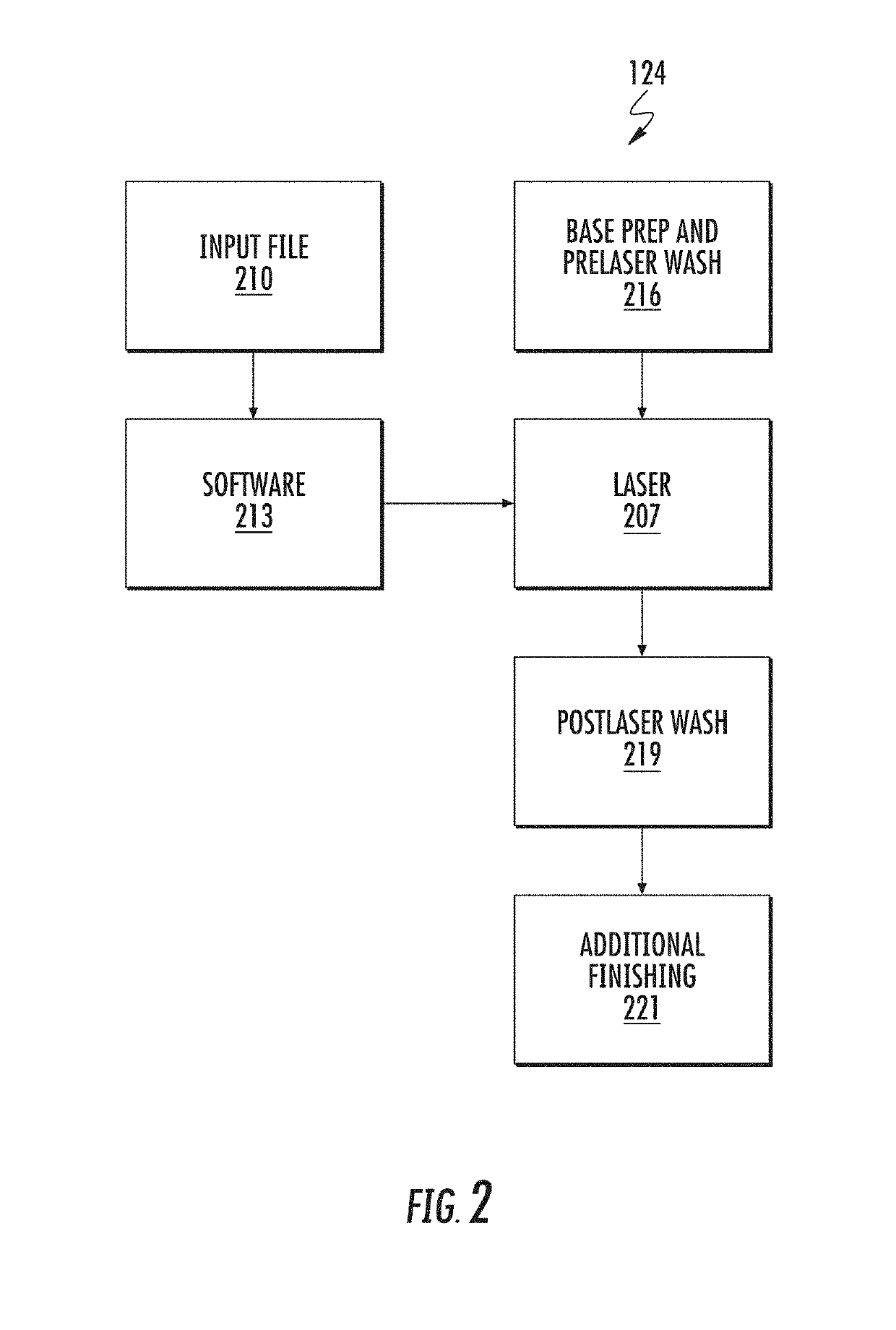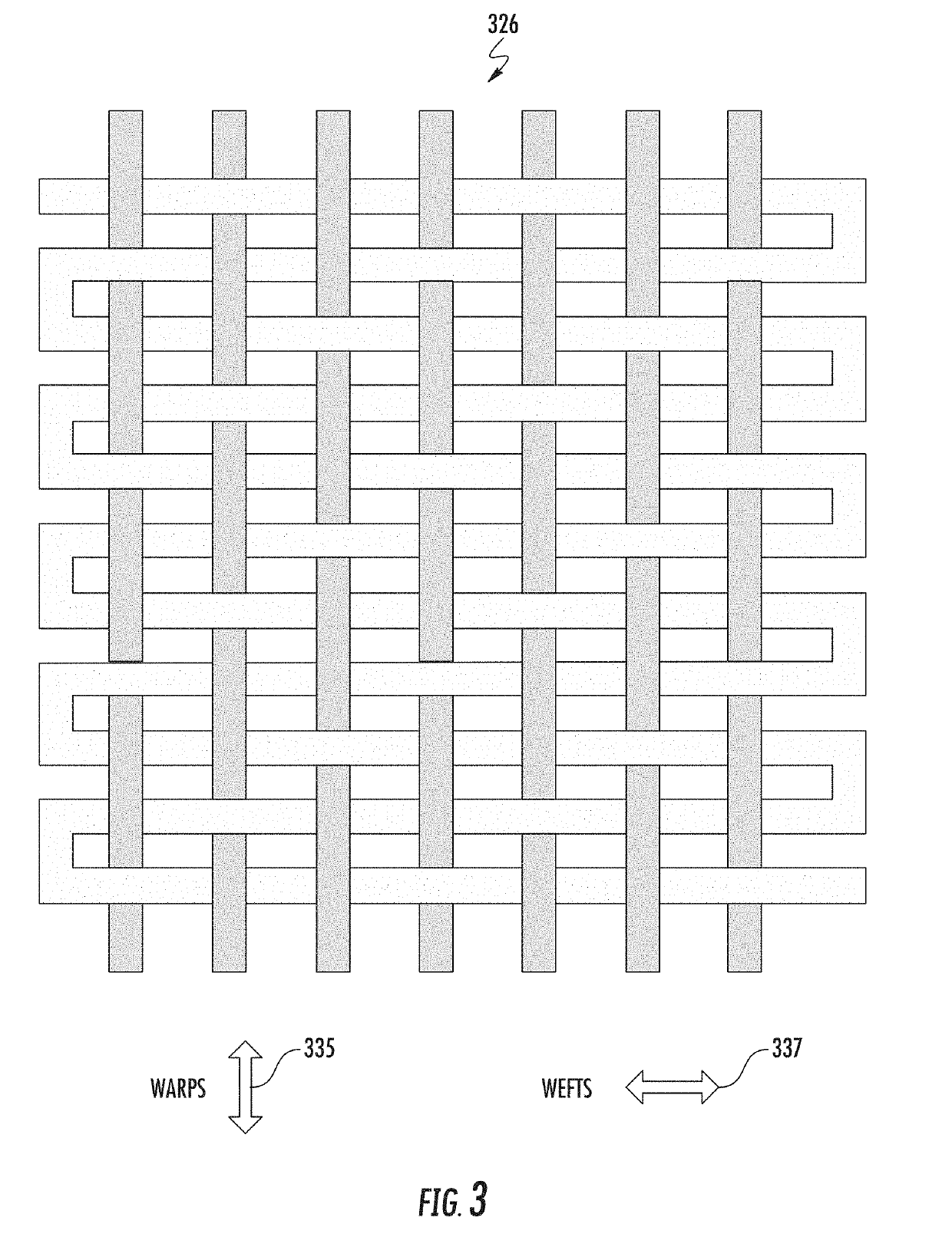Guided Allocation in an Apparel Management System
- Summary
- Abstract
- Description
- Claims
- Application Information
AI Technical Summary
Benefits of technology
Problems solved by technology
Method used
Image
Examples
Embodiment Construction
[0049]FIG. 1 shows a process flow 101 for manufacturing apparel such as jeans, where garments are finished using a laser. The fabric or material for various apparel including jeans is made from natural or synthetic fibers 106, or a combination of these. A fabric mill takes fibers and processes 109 these fibers to produce a laser-sensitive finished fabric 112, which has enhanced response characteristics for laser finishing.
[0050]Some examples of natural fibers include cotton, flax, hemp, sisal, jute, kenaf, and coconut; fibers from animal sources include silk, wool, cashmere, and mohair. Some examples of synthetic fibers include polyester, nylon, spandex or elastane, and other polymers. Some examples of semisynthetic fibers include rayon, viscose, modal, and lyocell, which are made from a regenerated cellulose fiber. A fabric can be a natural fiber alone (e.g., cotton), a synthetic fiber alone (e.g., polyester alone), a blend of natural and synthetic fibers (e.g., cotton and polyeste...
PUM
| Property | Measurement | Unit |
|---|---|---|
| Ratio | aaaaa | aaaaa |
Abstract
Description
Claims
Application Information
 Login to view more
Login to view more - R&D Engineer
- R&D Manager
- IP Professional
- Industry Leading Data Capabilities
- Powerful AI technology
- Patent DNA Extraction
Browse by: Latest US Patents, China's latest patents, Technical Efficacy Thesaurus, Application Domain, Technology Topic.
© 2024 PatSnap. All rights reserved.Legal|Privacy policy|Modern Slavery Act Transparency Statement|Sitemap



